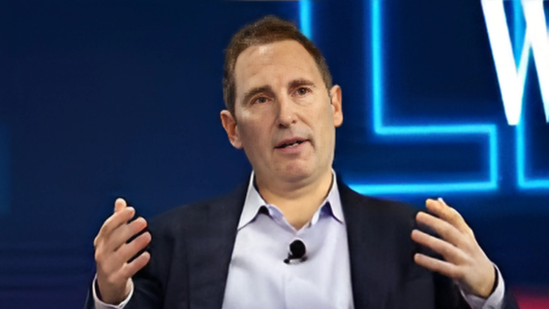
In a move that reflects the evolving landscape of the tech industry, Amazon has announced job cuts in its Devices and Services division. This decision comes as part of a strategic restructuring plan aimed at streamlining operations and focusing on more profitable ventures. The affected division includes teams working on popular Amazon products such as Alexa voice assistant, Echo smart speakers, and Kindle e-readers.
Amazon’s Devices and Services unit has long been considered an innovation hub for the company, responsible for building the consumer electronics ecosystem that integrates with Amazon’s digital services. However, in recent years, several challenges have affected its growth. The layoffs are seen as part of Amazon’s effort to cut costs, improve efficiency, and refocus resources on key growth areas.
According to sources within the company, hundreds of roles are expected to be impacted. Although Amazon has not revealed the exact number of layoffs, employees in both the United States and international offices have reportedly been notified. The company is offering severance packages, transition support, and assistance in finding new roles within and outside the organization.
Amazon’s senior leadership has clarified that this decision was not taken lightly. In a memo to employees, the head of Amazon’s Devices and Services unit mentioned that the team has reviewed priorities and identified areas where resources can be better aligned with customer needs and long-term business goals. “Some roles are no longer needed due to changes in how we invest in certain areas,” the memo said.
One of the key reasons behind the restructuring appears to be the underperformance of Alexa, Amazon’s once-flagship voice assistant. Though Alexa devices gained popularity after their initial launch, user engagement has not translated into high revenue. Most Alexa users rely on the device for basic tasks such as weather updates, setting timers, or playing music — none of which generate significant income for Amazon.
Despite billions invested in the project, reports indicate that the Devices and Services division has faced financial losses over the past few years. As competitors like Google Assistant and Apple’s Siri continue to improve, Amazon is under pressure to reassess how much it invests in voice technology.
The move to lay off workers also reflects the wider trend of job cuts across the tech industry. Major technology companies such as Meta (Facebook), Google, and Microsoft have all reduced their workforce in recent quarters due to slowing growth, economic uncertainty, and changing consumer behavior post-pandemic. Amazon, with its massive employee base, has also been reviewing its headcount and operations in several business units.
This isn’t the first time Amazon has made workforce changes in recent times. In the past year alone, Amazon has laid off over 27,000 employees, making it one of the largest rounds of tech job cuts in recent history. Most of these layoffs have impacted non-retail divisions such as Amazon Web Services (AWS), human resources, and advertising.
The Devices and Services team, however, remained mostly untouched until now. With this round of job cuts, Amazon is signaling a shift in focus away from experimental or non-profitable areas toward services that show immediate promise in terms of growth and revenue.
Experts believe that Amazon is looking to prioritize AI development, cloud computing, and logistics innovation over consumer gadgets that have uncertain returns. That being said, Amazon has made it clear that it is not abandoning its hardware business entirely. Instead, the company will continue to innovate in select categories where customer adoption and long-term value remain strong.
For example, Amazon is expected to continue investing in its Fire TV product line, smart home devices, and Kindle products, which have proven to be relatively successful. Moreover, the company has also hinted at upcoming projects in generative AI, machine learning, and supply chain automation, which may create new job opportunities in the future.
Analysts view this restructuring as a necessary step for Amazon to remain agile and responsive to changing market demands. The company’s stock price has remained relatively stable despite the announcement, which suggests investor confidence in Amazon’s long-term vision. While short-term morale among affected employees may be low, the company is hoping to emerge more focused and efficient after these changes.
In addition to cost-cutting, Amazon is also rethinking its product strategy. There have been concerns that the company was spreading itself too thin, trying to compete in too many verticals without a clear path to profitability. Reducing the scope of its Devices and Services team allows Amazon to double down on its core businesses, such as e-commerce, AWS, and advertising.
The affected employees have shared mixed reactions on social media and professional networks. Some expressed disappointment over being let go, while others appreciated the support and transparency Amazon offered during the transition process. A few former workers said they saw the writing on the wall as some projects were put on hold or deprioritized in recent months.
Meanwhile, job placement firms and tech communities are stepping in to help those impacted. Several tech companies, including startups, are reportedly open to hiring laid-off Amazon employees, recognizing the skills and experience these professionals bring from working at one of the world’s leading tech giants.
From a broader perspective, these layoffs raise important questions about the future of voice assistants and smart home devices. While consumer interest remains, companies are finding it hard to monetize these platforms effectively. Some industry insiders believe the next evolution of smart assistants will need to be more intelligent, personalized, and integrated with everyday services to stay relevant.
As Amazon moves forward with its business transformation, many will be watching closely to see how the company balances innovation with profitability. Its journey is a reflection of the larger shift happening in the tech world — a move away from growth at all costs to sustainable business practices and smart resource allocation.
In conclusion, Amazon’s decision to trim jobs in its Devices and Services unit highlights the challenges even the biggest tech companies face in an evolving global economy. While the news may be difficult for those impacted, it is also a sign of Amazon’s commitment to adapting, surviving, and leading in a future defined by intelligent technology, customer-centric services, and financial discipline.































